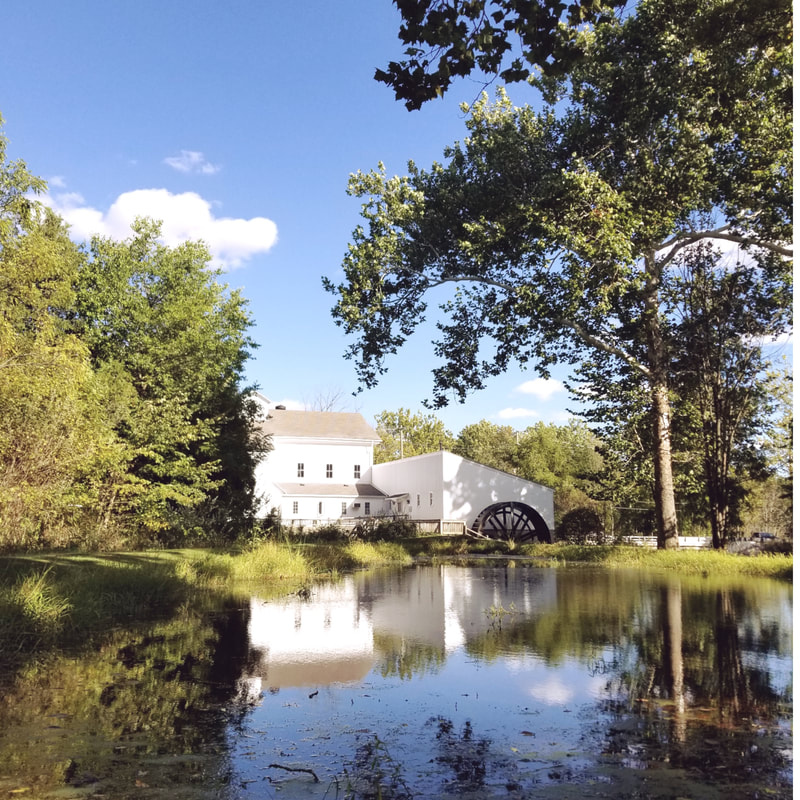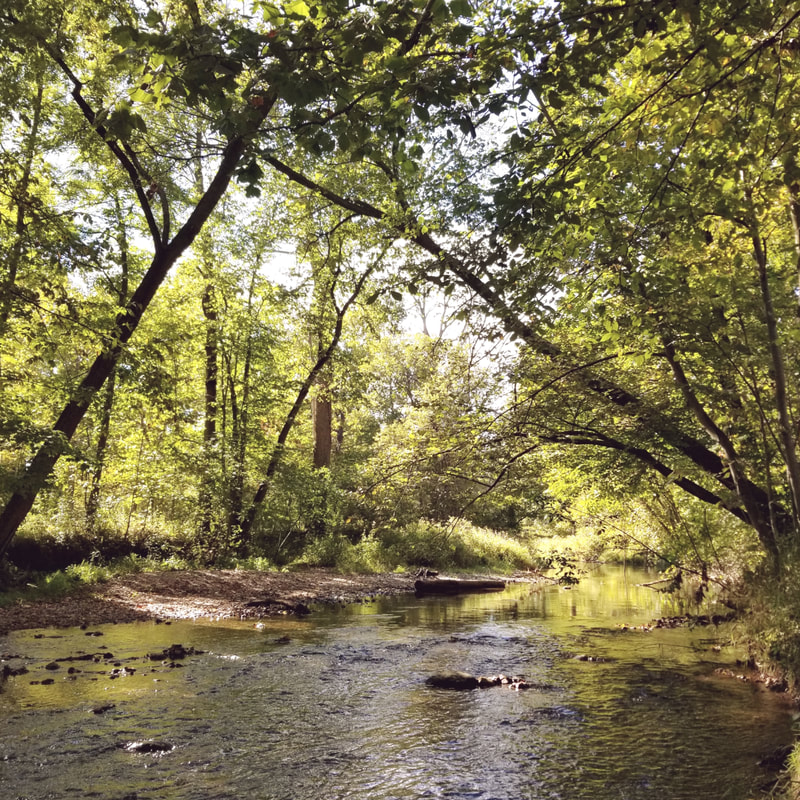|
Belle Isle is a public island comprised of more than 970 acres floating in the middle of the Detroit River, easily accessible from the mainland by boat, kayak or bridge. It had formerly been under management of the City of Detroit. During the end of that tenure, it was a disappointing place to visit, having accumulated its share of dilapidated or unused buildings, trash and unsavory visitors. When the State of Michigan Department of Natural Resources took over management of the island in 2013 under a thirty year lease, all of that came to a grinding halt. The island, long suffering under neglect from the City, immediately evidenced a stronger police presence, enhanced amenities, and solid clean up effort. As I write this, the island is covered in orange barrels, continuing updates and preparing for the annual Grand Prix. Anna Scripts Whitcomb Conservatory There are many remarkable features on the island, but my favorites are the Aquarium and Conservatory. The Conservatory opened in 1904 and continues to be one of the oldest (if not the oldest?) continually running conservatory in the United States. It was named after Ms. Whitcomb in the mid-century when she dedicated her orchid collection to the Conservatory. The Conservatory, like the Aquarium that resides in its shadow, were both built by our most famous local architect firm - George D. Mason and Albert Kahn. It's difficult to throw a stone in Detroit and not hit one of their buildings. The Conservatory features a remarkable domed glass ceiling that always reminds me - oddly enough - of one of my first legal jobs, which was in the building which now houses Wayne State University's Tech Town, 440 Burroughs, Detroit. The top floor of the building has a stunning glass ceiling and used to make it feel like we were working in a greenhouse. If you are a design or architecture buff and have not delved into Albert Kahn's legacy, you have to check it out right away! Belle Isle Aquarium The Belle Isle Aquarium is one of the most stunning and beautiful uses of glass tile in the world. The building went up in 1904, just like the Conservatory. Although briefly closed to save costs for a few years in the mid-2000s, the Aquarium is now run and operated by the non-profit Belle Isle Conservancy. Although the original closure cited dwindling interest in the Aquarium, it is hard to picture that now! My recommendation is to arrive early or go during the week to ensure ease of navigation. There are so many native and non-native fish and aquatic species in the Aquarium, it's nice to ensure that the kids can get up nice and close. I always thought that the famous tile was Pewabic Pottery, but was recently corrected by one of the volunteers (thank you Instagram!) It actually is opaline glass tile from Pennsylvania. With that said, Pewabic Pottery maintains the same color glaze on a tribute tile available for purchase. If Fate is kind to me, one day my entire kitchen will look something like this. If you spend any time wandering around Metro-Detroit on this site, you'll probably pick up on the fact that Detroit was settled by the French (in fact, it was a French fort.) The influence of this French history still trickles through everything. Many of the nooks and crannies of Belle Isle remind me of the painting Sunday Morning on the Island of Le Grande Jatte by Georges Seurat.
0 Comments
One place that is really special for our family is Bruce Peninsula in the Georgian Bay. We live in a North Eastern suburb of Detroit, and it takes only a half-hour to reach the Canadian border via Sarnia. From there, the Georgian Bay coastal route winds its way along Lake Huron to a tiny fishing village called Tobermory, which occupies the very tip of the peninsula. Georgian Bay has more than 30,000 islands! The area boasts two National Canadian Parks and Canada's Longest Footpath, the Bruce Trail. The area is remote and frankly, I can't imagine anyone who claims to love either stargazing or hiking missing out on this magical place. The character of Bruce Peninsula is enhanced by its extraordinary granite rock formations, carved away during the last ice age. One of the most scenic places on Bruce Peninsula rests within its National Park: The Grotto. It's a substantial cave, located right on the Georgian Bay shoreline. I've never seen water this color, except for Pictured Rocks National Lakeshore in the Upper Peninsula of Michigan and the Carribean. Swimming is the Grotto is permitted, but wear your hiking shoes, as the shoreline here is quite rocky and challenging. Literally, there are only two ways into the cave: the first is a small tunnel that would be completely off-limits for most young children or elderly visitors; the second is a climb down the open face of a forty-foot high cliff. Within the Fathom Five National Marine Park rests an incredible place: Flowerpot Island. Access to the Island is not difficult, as there are many tour boats from Tobermory. One of the things that blew me away about this Island was how meticulously well-maintained its facilities and trails were kept. I swear that the bathroom on this island was much cleaner than my own has ever been at home! This care makes it possible for children and older visitors to navigate through most of the Island's most spectacular features, such as the famous "flowerpot" rock pillars (which are naturally, not man-made) and historic light house (pictured below.)
Charleston has my heart! We stayed on Kiawah Island, a coastal paradise of premier golf courses and sandy beaches approximately one hour south of the city. From the coast, it takes only takes about an hour to drive to the historic plantations in the area - including my favorite, Magnolia Plantation, which occupies more than four hundred acres off of the Ashley River. Magnolia was originally a rice plantation, and the property is rich with the kind of low lying, stagnant waters beloved by that particular crop. African slaves created an extensive system of dams and dikes to best orient the water toward the crops, leaving behind a beautifully cultivated land yet terrifying and humbling legacy. In the mid-1800s, the gardens on the property were reworked into a lavish, abundant and thoughtfully curated group. The gardens now encompass a tropical indoor garden, Biblical garden (featuring plants mentioned in the Holy Book), Camellia collection, Cattail wildlife refuge, Cypress Lake (featured above), formal mazes and labyrinths, and even a nature center and petting zoo. For anyone who loves gardening (like me!) this particular plantation will leave you feeling like you're in absolute Heaven. I can't wait to visit again during a different season to take in the variation among the blooming plants.
Whiting Forest in Midland, Michigan Whiting Forest of Dow Gardens is a truly special place in Michigan. In October 2018, Whiting Forest opened up the nation's longest canopy walk, which hovers above the ground at heights up to forty feet. The walk is 1,400 feet long, but laid out in such a way that even young children or those with physical impairments navigate it with ease. Certainly, the walk is the absolute highlight of any trip to Whiting Forest, but it's hardly the only thing that makes this place worth visiting. Whiting Forest is the kind of place that young children dream about when they think of disappearing into a deciduous forest. The colorful fall leaves are a perfect compliment to the organic design of the canopy walk, providing plenty of nooks, crannies and special places to hide away or take in a vista. The forest is easy to navigate and difficult to get lost in, despite its size, since it contains many intuitive and well marked trails. The best part about Whiting Forest for families is the wonderful playground installation. It is one of the largest playgrounds I've taken our little man to, featuring many natural details, such as real rocks to scamper over. I loved how they did a great job incorporating elements of nature into the playground, instead of simply constructing another brightly colored artificial structure. When everyone is finished getting their share of fresh air and playtime, a conveniently located cafe nearby offers hot cocoa and freshly baked treats.
Wolcott Mill Metropark Wolcott Mill Metropark (including the Wolcott Mill Farm Center) is one of my family's favorite weekend destinations. Although Wolcott is only fifteen minutes north of where we live, it feels like an entire world away. The historic mill here was built in the 1840s and the campus here manages to be both informative and evocative of that time long passed. The Farm Center features a public, working dairy farm as well as a motley crew of adorable resident animals, including a couple of well fed barnyard cats. I've never seen any place make animals accessible to young children in such a consistent and thoughtful way. The animals even "hand out candy" at Wolcott's annual Halloween festivities. While the animals are adorable (and the on-site playground creative and well-maintained) our favorite activity at Wolcott is simply walking along the many well groomed trails. The northern branch of the Clinton River bisects the property, creating the perfect little wetland environment for hunting for frogs, crayfish and turtles. The mature trees form a perfect canopy overhead and the sounds of wind through all of those leaves is akin to the ocean washing ashore.
Leland, Michigan Leland is a charming 19th century town located on the coast of the Leelanau Penninsula, a tiny barrier of land between the vastness of Lake Michigan and Lake Leelanau. It's hard to believe that the picturesque collection of historic buildings was once an Ottawa settlement. Surely the most remarkable feature of Leland is Fishtown, comprised of weather-beaten wooden docks and fisheries and looking basically the same as it has for hundreds of years. Fishtown was one of the final fishing towns on the Great Lakes. While the streets are now dotted with tourist shops and microbreweries, it still reminds me of the kind of historic town you would expect to see in Europe. Something about this town seems frozen in time, despite the fact that the fisheries have now largely given way to kitesurfers. If you are heading to Leland, there's no better place for to chat over a bottle of cherry wine and charcuterie board than The Riverside Inn, which is just a short walk away from these views. Don't let the laid back Midwestern vibe fool you. This restaurant is progressive enough for even your pickiest vegetarian friend, even featuring a shwarma cauliflower "steak" on its dinner menu.
Cranbrook House and Gardens I love to find all of the peaceful, beautiful nooks around Metro-Detroit. I'm not sure that any single location has more of those the Cranbrook House and Gardens, a National Historic Landmark in Oakland County, Michigan. Cranbrook House was the primary residence of George and Ellen Booth (a family whose wealth originated in both iron-working and the heyday of publishing) until 1949. Albert Kahn, an architect whose noteworthy works pepper the entire city prepared the design for the now iconic English Arts and Crafts design. Eventually, the estate became the cornerstone for a much more significant series of developments, all known locally under the ambit "Cranbrook," but now including secondary educational institutions, as well as the nationally recognized Cranbrook Academy of Art and Cranbrook Institute of Science. While I adore all of these different institutions, the home is my favorite place to meander because of the sheer breadth of the grounds. It is the kind of place where you can walk for miles without even realizing. The gardens around the House occupy forty acres and contain something for every type of gardening aficionado, whether you prefer formal garden design or more naturalistic. My mother was born in England, so I'm partial to the English gardens around the manor, many surrounded by fieldstone walls. "A life without beauty is only half-lived" - George Booth  Access to the greenhouse is generally limited, but it is one of my favorite parts of touring the grounds, as it recreates both an arid and greenhouse landscape that are otherwise only available with a plane ticket. Scattered through the grounds are various local treasures, such as the Pewabic Pottery which forms the backsplash of one of the fountains. Everywhere I look at Cranbrook, I see something beautiful, which makes it my favorite place to spend a Sunday afternoon. One of the most remarkable features of modern Detroit has been the thoughtfully curated functional spaces created in many of its alley ways. Formerly unpleasant places avoided by those working and living in the city, now many of the alleys feature strollers and leashes alongside vibrant public art, well-lit gathering places and native plants. No one could stop to appreciate alleys in Detroit without mentioning The Belt, a collaboration between Bedrock and Library Street Collective. The alley which formerly featured little put potholes and dumpsters is now a bustling destination in its own right with its own outdoor bar and a constant parade of photographers using its colorful murals and art installations as backdrops for their clients' most celebrated moments. These alleys represent Detroit's interest in identifying underutilized spaces and transforming them. As someone who walks around the city all of the time, they represent mini oases of creativity and imagination against the typical gray landscape of urban life.
Marine City is one of our favorite weekend destinations. A charming little town on the St. Clair River, it features one of the most pleasant main streets in Metro-Detroit, flanked on one side by the river and on the other by rows antique stores, restaurants, confectioneries and even a gemstone gallery tucked away in a historic building. In relatively recent years, it has become home to the Snug Theatre, which features classic and contemporary productions of popular shows, such as A Christmas Story - The Musical ("you'll shoot your eye out, kid!") One of our favorite features of Marine City is the sleepy little beach at the end of the main street. Here, there are brand new public restrooms and cool freshwater waves only steps away from ice cream and sandwiches. The sidewalks here are of the type that you can walk barefoot when the weather permits. We love just strolling along the riverfront walkway, visiting the numerous parks along the path, like Lighthouse Park, Waterworks Park, Broadway Park and the Nautical Mile Park. Freighters and kayaks alike cut through the St. Clair River, and a ferry is available to take visitors across to Sombra, Ontario.
This stunning image was captured at the El Conquistador Resort in Fajardo, Puerto Rico. Like many other regions of Puerto Rico, Fajardo was hit particularly hard by Category 5 Hurricane Maria, which made landfall over Puerto Rico on September 20, 2017. This resort, like so many others, was forced to close for many months to perform repairs and renovations, resulting in a culture of uncertainty for so many of the lovely Puerto Ricans that worked there. Even more than a year later, this beautiful resort continues to revitalize. Puerto Rico is a very special destination for our family, as it represented the first time that we took our son on an airplane! Puerto Rico is quite the comeback story and every dollar spent on tourism there is a vote of confidence for the recovery of our special U.S. Commonwealth. After Hurricane Maria provoked the largest power outage in American history, $4.5 billion was committed to power grid improvements, an effort spearheaded by five dozen investor-owned electric companies and public power utilities. We stayed at several places in Puerto Rico during our stay, but the El Conquistador had the most amenities by far. It was like staying in a city! The on-site shops, restaurants and marinas made it a very convenient place to vacation as a family. Our favorite special feature of El Conquistador was Palomino Island. While some parts of the private island had a festive atmosphere, we were always able to find a quiet space to simply splash in the shallow surf and take in the views of the ocean.
|
AuthorCelebrating the feminine and beautiful side of Metro-Detroit, as well as a few favorite getaways. Archives
May 2019
Categories |






































 RSS Feed
RSS Feed
